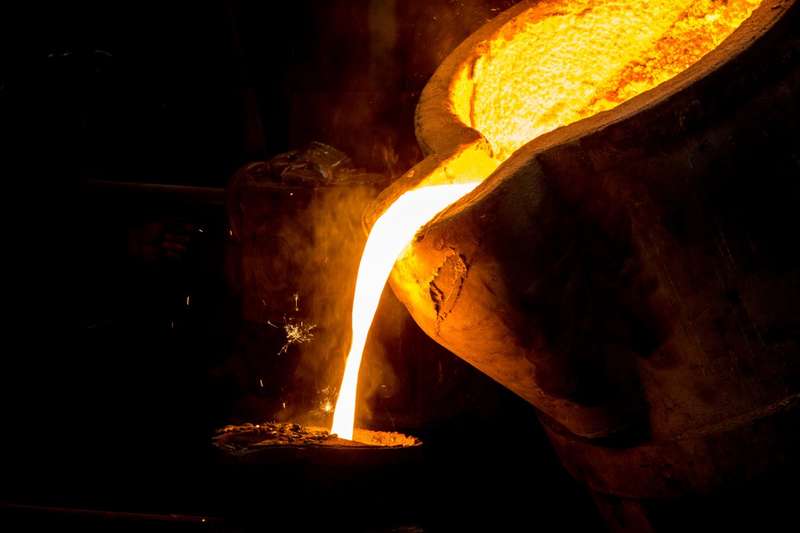Blog
How to Optimize Weld Stud Application for High-Temperature Environments

High-temperature environments pose a unique set of challenges for weld stud applications. The substantial heat involved can significantly influence weld stud performance. A thorough understanding of these implications is necessary to ensure the creation of reliable and long-lasting weld studs and welds in such extreme conditions.
Understanding the Impact of High Temperatures on Weld Stud Performance
High temperatures can cause thermal expansion, altering the physical dimensions and shape of the stud. This change can lead to fitment issues or compromised joint integrity. Additionally, heat can accelerate chemical reactions, heightening the risk of corrosion. To help navigate these issues, Image Industries provides comprehensive guidance on material behavior under high temperatures. Contact our experts today.
Potential Risks and Deterioration Factors in High-Temperature Conditions
In high-temperature conditions, a weld stud can face numerous risks and deterioration factors. Oxidation and other forms of corrosion can become more pronounced, weakening the stud material over time. Mechanical properties such as tensile strength, yield strength, and hardness may be reduced, lowering the stud's load-bearing capacity and overall performance. Further, repeated thermal cycling can lead to thermal fatigue, causing cracks to form and propagate in the weld stud material.
The Importance of Thermal Stability in Weld Stud Materials
Thermal stability refers to a material's ability to maintain its properties under high-temperature conditions. For weld studs, thermal stability is crucial. A thermally stable stud material will resist dimensional changes, maintain its mechanical properties, and resist thermal fatigue and high-temperature corrosion. Consequently, selecting stud materials with good thermal stability can significantly enhance the reliability and lifespan of welds in high-temperature environments.
Solutions for Weld Stud Application in High-Temperature Environments
Achieving successful weld stud application in high-temperature environments requires careful material selection, appropriate welding techniques, and proactive maintenance and monitoring.
Material Considerations: Choosing Studs for Heat Resistance
Materials such as stainless steel and certain alloys, like Inconel and Hastelloy, offer excellent heat resistance and are often used for weld studs in high-temperature environments. These materials maintain their strength at elevated temperatures and resist oxidation and other forms of high-temperature corrosion, making them ideal for such challenging applications.
Welding Techniques for Enhanced Durability in High Heat
Certain welding techniques can enhance the durability of weld studs in high-temperature applications. For example, preheating the stud and base material can reduce thermal shock and minimize the risk of thermal fatigue. Using a shielding gas during welding can protect the weld area from oxidation, enhancing the joint's resistance to high-temperature corrosion.
Maintenance and Monitoring Strategies for High-Temperature Applications
Regular maintenance and monitoring are crucial in high-temperature applications. Regular inspections can identify signs of deterioration early, allowing for timely repairs or replacements. Monitoring the temperature of the operational environment can ensure it remains within the stud material's safe operating range. Employing thermal imaging tools or temperature sensors can help in this regard.
Ensuring Successful Weld Stud Application in High-Temperature Scenarios
Proper planning and stud selection are key to ensuring successful weld stud application in high-temperature scenarios. This involves understanding the operational requirements, selecting an appropriate stud material and welding technique, and implementing a proactive maintenance and monitoring regime.
The Role of Proper Planning and Stud Selection
Proper planning involves understanding the temperature range the stud will operate in, the type of thermal cycling it will experience, and the potential for exposure to corrosive substances. This information can guide the selection of a stud material with suitable heat resistance, thermal stability, and corrosion resistance. Additionally, the chosen welding technique should be compatible with the stud material and capable of providing a reliable weld in the expected operating conditions.
How Image Industries Can Support Your High-Temperature Weld Stud Needs
Image Industries offers a wide range of weld studs suitable for high-temperature applications, including studs made from heat-resistant materials. Our technical team can provide expert guidance on stud selection, helping you choose the right stud material and size for your specific application. We can also advise on suitable welding techniques and maintenance strategies to ensure your welds perform reliably and lastingly in high-temperature environments. With our support, you can confidently tackle the challenge of weld stud application in high-temperature scenarios, enhancing the reliability, longevity, and performance of your welded assemblies.
Understanding and addressing the challenges of high-temperature environments are critical for successful weld stud application. By considering the impact of heat on stud performance, selecting appropriate stud materials and welding techniques, and implementing regular maintenance and monitoring, you can optimize weld stud application for these demanding conditions. The expertise and support of a seasoned supplier like Image Industries can prove invaluable in this endeavor, ensuring your weld stud needs are met with quality, precision, and reliability. Find a part or request a quote today.
Building lasting bonds since 1976.
Providing superior stud welding and stud welder parts and equipment isn't enough. We also strive to deliver better service and unmatched expertise. And that's exactly what we've been doing for more than 40 years.
Read About Our History